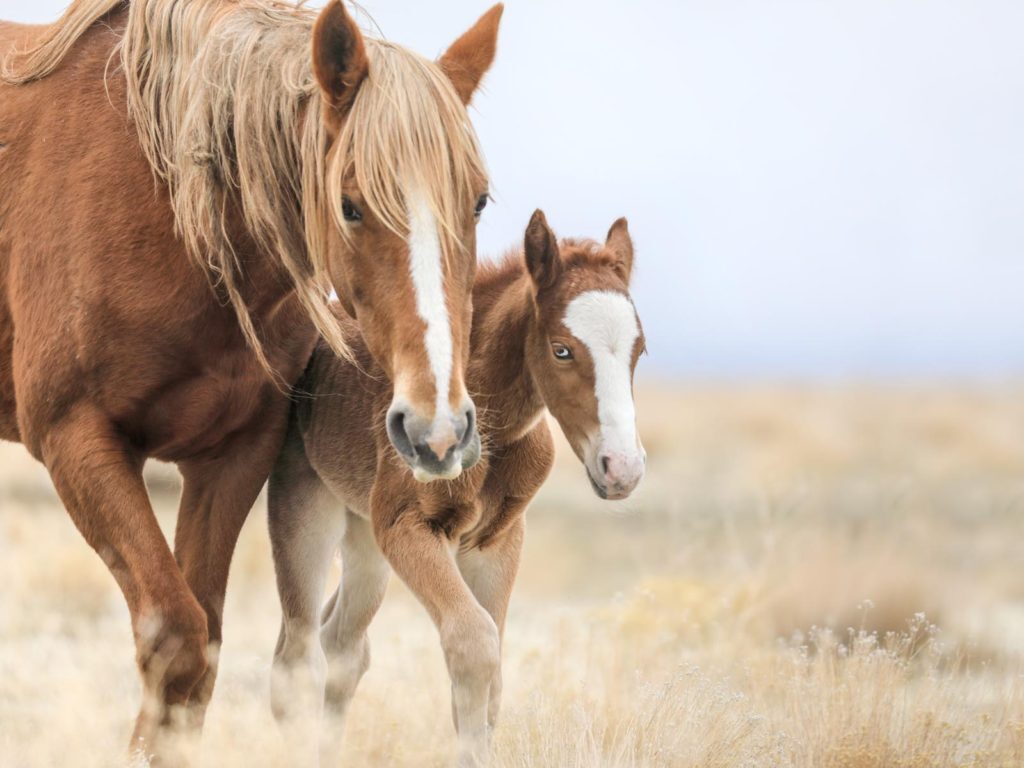Key House Committee Can Adopt Key Anti-Horse Slaughter Provision
- Wayne Pacelle
Today, Congress takes up what is now a familiar topic – the transportation of horses for slaughter for human consumption. Reps. Troy Carter, D-La., John Katko, R-N.Y., and Brian Fitzpatrick, R-Penn. — all champions of animal welfare — have filed an amendment to the INVEST in America Act to come before the House Transportation and Infrastructure Committee, perhaps as early as this afternoon.
If lawmakers have served in Congress for more than a few months, they’ve heard from their constituents that horse slaughter is a disgrace, a betrayal of our relationship with equines, and a predatory industry that gathers up horses disreputably and funnels them into the slaughter pipeline.
Each year, it is estimated that truckers haul 36,000 or so American horses to Canada or Mexico for slaughter. Slaughter occurs after a long, harrowing, and horrible journey that often begins at an auction barn in a rural part of the U.S. and ends in a small town in Canada or Mexico that turns frightened horses, including former pets, show and race horses, and working ranch animals, into slabs of meat. It’s an inhumane process from start to finish, and far from a dignified or appropriate end for a creature who did nothing wrong and who deserved much better than to be turned into a steak for a foreign consumer.
It’s purely an export market, with Canada and Mexico killing U.S. horses and then shipping the frozen meat to a handful of nations where a small subset of consumers have an appetite for horse flesh.
The horse slaughter industry does not ‘euthanize’ old, sick horses — but precisely the opposite: kill buyers, typically misrepresenting their intentions, buy young and healthy horses and haul them away. Most horse owners who take an animal to an auction are unaware that their horse could die by stabbing or with a shot to the head in a kill box in a foreign abattoir. The U.S. Department of Agriculture some years ago reported that 92 percent of horses going to slaughter are in good condition and able to live healthy and productive lives.
The industry preys on domesticated and wild horses alike. In May, the New York Times reported that the Bureau of Land Management pays adopters $1,000 for each wild horse or burro rounded up from our federal lands, and many of those adopters later sell the animals to slaughter — profiting on both ends of this commercial process that ultimate serves as a way for the BLM to wash its hands of the horses it rounds up at the behest of the commercial livestock industry.
Horses are transported long distances in overcrowded trailers and are badly injured or even killed during transit. Inside the bloody, panic-stricken environment of a slaughterhouse, their suffering only intensifies as horses endure repeated attempts to render them unconscious. When horse slaughter plants operated on U.S. soil before being rightfully shut down in 2007, it proved to be no better: the USDA documented horrific cruelty, including broken bones and eyeballs hanging from eye sockets by a thread of skin.
Even though the trade is demonstrably ruthless and inhumane, proponents of this grisly practice try to convince the public that slaughter is somehow “good” for horses who would otherwise be neglected. But it’s actually the kill buyers who routinely abandon horses, especially at the border when they are rejected for slaughter. They are also responsible for a laundry list of terrible cases of severe neglect. The crash sites where trucks and trailers have overturned are a mess of blood, sinew, and limbs, and for the horses who survive and are not crippled, they may run down the highways with visible wounds and their eyes as big as saucers.
And it’s hardly a product so valued that it’s worth all this torment for horses. Horses in the U.S. are never raised with the intention of turning them into food, so they therefore may be treated with any of hundreds of drugs over the course of their lives, both illegal and legal, that may be toxic to humans if ingested. One example, phenylbutazone or “bute,” is as common to horses as aspirin is to humans and is banned by the FDA for use in any animal intended for human consumption.
We don’t round up dogs and cats for slaughter, and it should be unthinkable to do that to a species that helped us settle the nation. Our humane position is grounded on the notion that people who breed and own horses should act responsibly and provide lifetime care or transfer horses to someone who can. It’s a remarkable betrayal for people to enjoy and benefit from the physical and behavioral attributes of horses and then sell them off to a kill buyer when they’re done with them.
No one disputes that there are some homeless horses. But the horse slaughter crowd treats homelessness as an economic opportunity rather than a moral responsibility.
The idea of slaughtering horses for human consumption will never gain traction here in the United States. Americans have an abiding appreciation for horses, honor their presence as pets and companions in our lives, and owe them a debt for their service. Those values will triumph over the selfish notion advanced by a relative handful of people who size them up, cut them up, and offer them up by the pound for a diminishing base of foreign consumers.
That march of progress faces an important test today in the House Transportation and Infrastructure Committee, where more than 130 organizations are backing the amendment that Animal Wellness Action initiated with key lawmakers. This is a moment to reach your federal lawmakers, whether or not they serve on that committee, and to remind them that the United
States should not play a central role in the North American horse slaughter racket. Click here to take action now.
